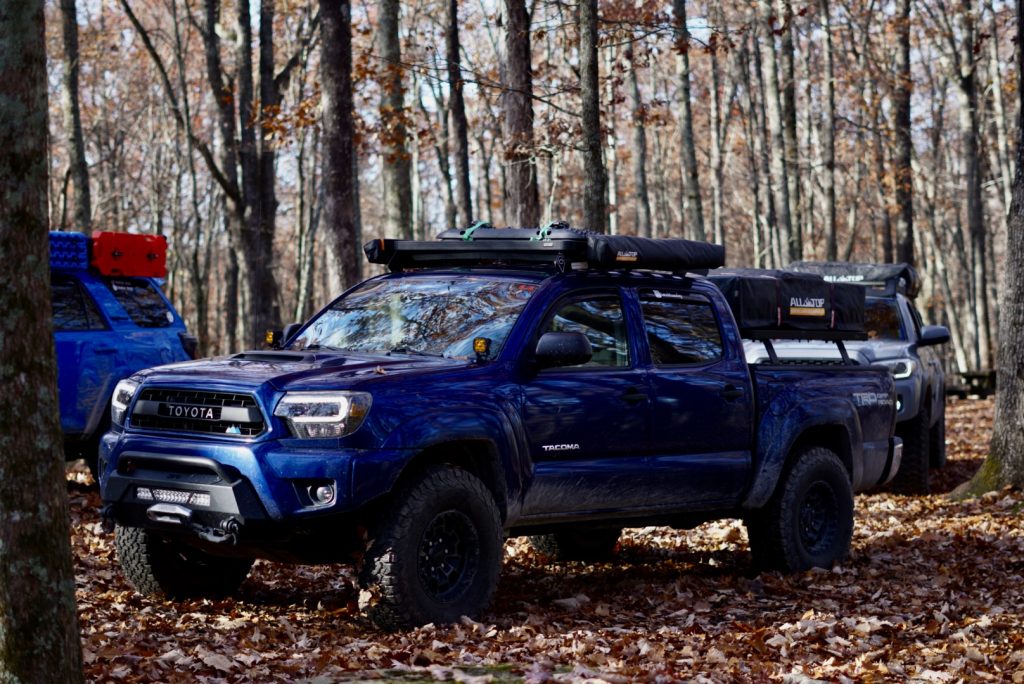
When considering a bed rack to expand the capabilities of your truck, there are several factors to keep in mind. Of those, the height of the rack is one of the most important features to consider.
Most companies offer height ranges including low, mid, and cab height. Each selection has its advantages and disadvantages, depending on the situation and how it works with the rest of your build. Picking one also comes down to personal preference.
Ultimately, there are no right or wrong decisions here. We will explore each rack height option to help guide your decision rather than convince you one way or the other.
The best place to start is to think about what you want from your truck. Are you trying to maximize daily drivability? Do you want to preserve the usefulness of your bed and add more attachment options? Are you trying to keep wind drag and center of gravity low while still having options to mount accessories? The answers to these questions will help determine which bed rack height is ideal for your setup.
Featured Products In This Post
- Front Runner Slimline II (Low-Profile): Check Price
- Cali Raised LED Overland (Mid-Height, but all three available): Check Price
- Leitner Designs Active Cargo System (Full-Height): Check Price
Table Of Contents
Low-Profile
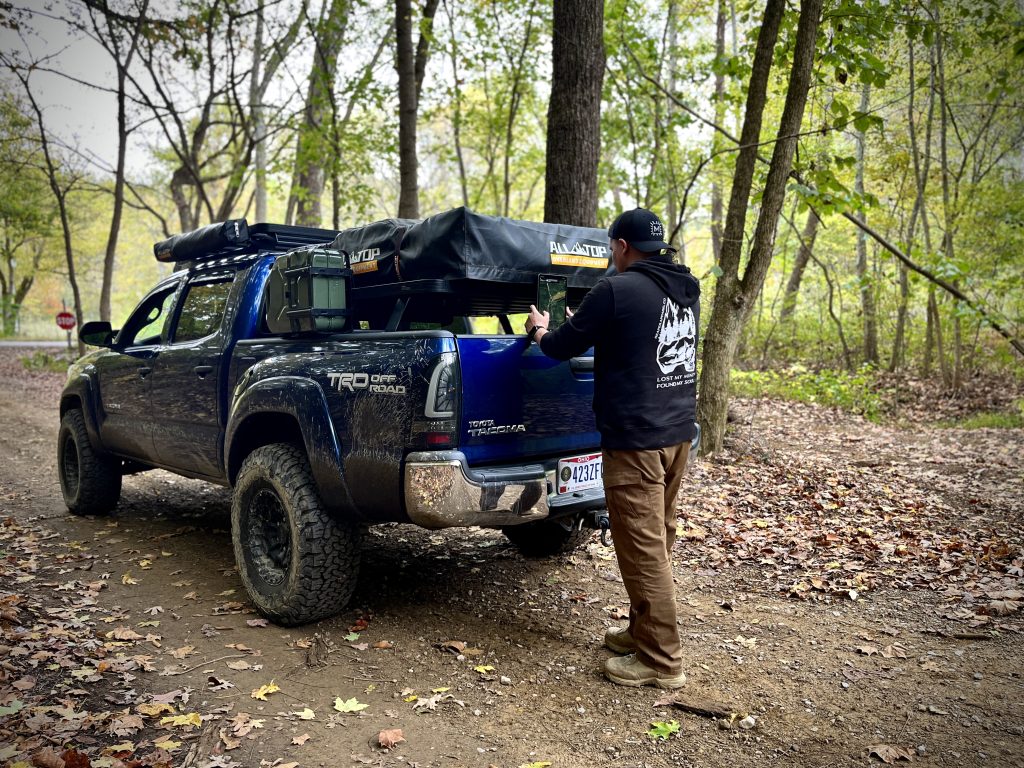
A popular choice for Tacomas is the low-profile bed rack. This sleek option keeps your mounted gear below the cab, reducing wind drag and saving fuel on long trips.
Additionally, this rack keeps the weight low, making for a better daily driver. It’s also important to consider the ease of accessing your gear. With this rack option, you can easily reach anything you’ve mounted and set up or take down a rooftop tent.
One of the better options, in my opinion, is the Front Runner Slimline II Load Bed Rack. This is what I currently have on my Tacoma. I have found that it makes setting up camp much easier as I can do most of the tasks without climbing up to reach anything. Also, the Front Runner rack systems have some of the most comprehensive selection of accessories of any other brand I have seen.
It’s important to note that while low-profile racks offer advantages, they also come with some limitations. Due to the rack’s low profile, there are restrictions on what you can store in the bed of your truck. Additionally, accessing items in the back of the bed can be challenging with the rack in the way. It’s also worth noting that most won’t allow you to mount accessories on the sides, unlike taller options.
If you’re looking for a rack to support a rooftop tent or storage boxes while keeping things minimal, a low-profile is a great choice. It won’t affect the performance of your truck on and off the road either. However, if you want maximum storage space for mounting gear or full access to your bed for larger items, you may need to consider other options.
Mid-Height
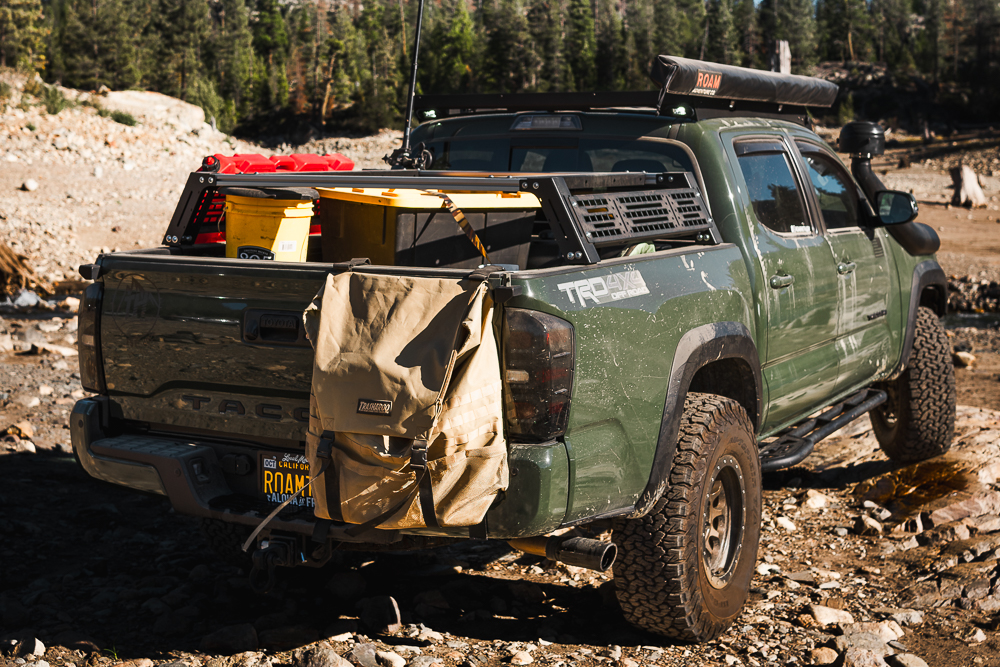
A mid-height bed rack has similar benefits and drawbacks to a low-profile one. However, you will have more usable space in your truck bed, and you can mount additional accessories to the sides of the rack system.
This option has the advantage of keeping the center of gravity and wind drag lower than full-height (or cab-height) racks. This is an ideal choice for those who want the most storage and organization space without significantly impacting vehicle aerodynamics. Adding a tent to one of these will likely get you to roughly the same height as your roof rack (if you have or plan to get one) – so you can still get a streamlined look.
One of the recommended systems is the Cali Raised Overland Bed Rack (10″ mid). This is a reliable system from a well-known off-road and overland brand. You will be pleased with the ample space for accessories and the build quality. Cali Raised stands out because they offer all 3 options too!
Full-Height
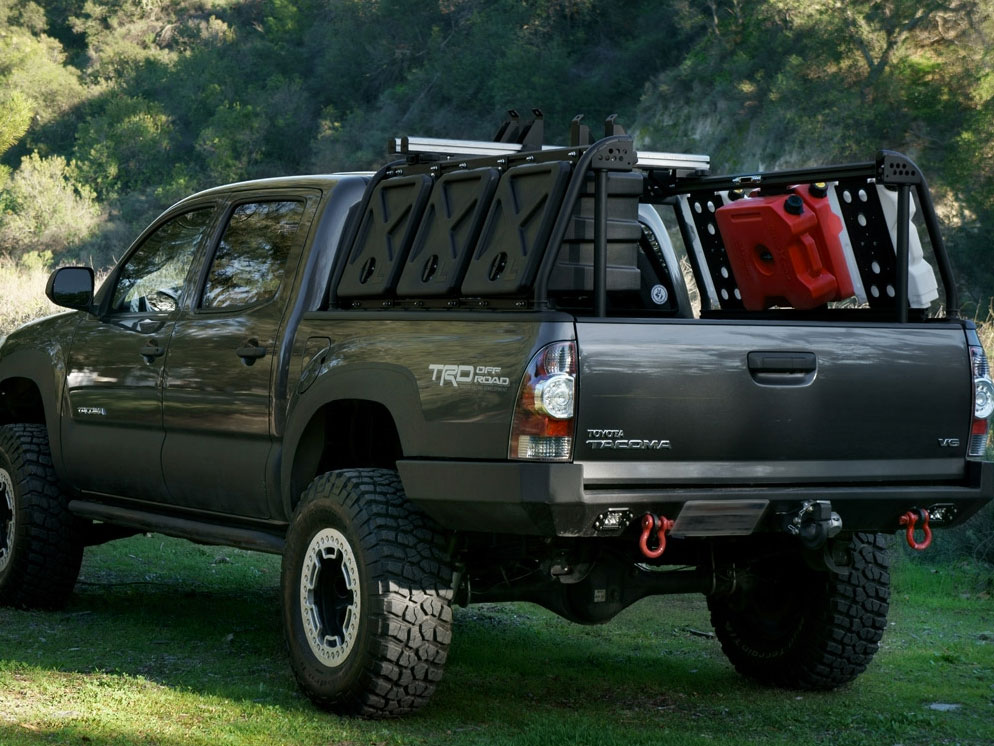
If you’re looking for the most usable space in your truck bed and for mounting accessories, full-height racks are your best option. They provide more space than any other option, which is particularly useful if you’re planning an extended trip.
The Leitner Designs Active Cargo System offers adjustable crossbars, making it possible to transport full-size bikes. Although it’s a bit pricey, this design is suitable for any adventure you’re planning. Additionally, it comes with optional add-ons to adapt to any adventure.
The main drawback to full-height bed racks is the impact on daily drivability, especially when loaded down with weight and/or a rooftop tent. You will feel a higher center of gravity when going around corners, and your fuel economy will take a hit as it’s not as streamlined as the other options.
With all of the gear you can store, you’ll likely need to beef up your rear suspension as well. This option will make your Tacoma stand out, so if you want to be more inconspicuous, you may want to consider one of the other options.
Final Thoughts
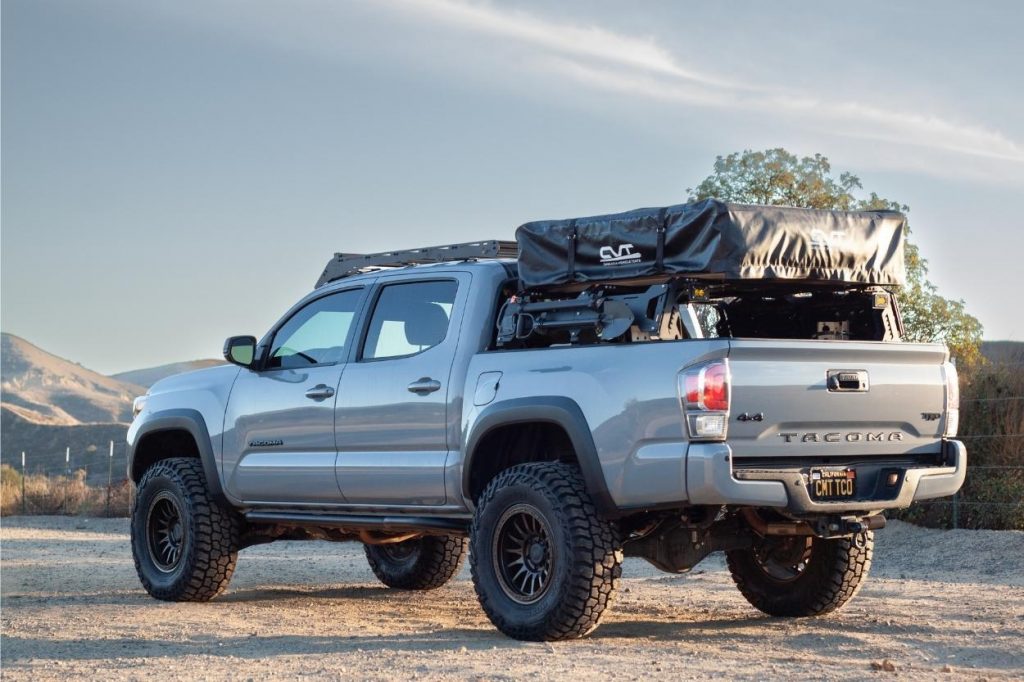
I hope this guide gives a better idea of which bed rack option would be best for your setup. Ultimately, it comes down to personal preference and how much gear you need to store.
I have personally used both the full-height and the low-profile options, and each had its advantages and disadvantages. If you’re having trouble deciding, keep in mind that these decisions are not final. It’s very rare to say, “My truck is done”. My Tacoma is constantly evolving to suit different situations and needs.
You may even decide that a bed rack isn’t right for you and go a different route altogether, such as a GFC camper or topper. It’s your build, so you’ll know what’s best for it!


In my opinion, the mid-height is the way to go! Still gives you a good amount of room underneath for extra storage in the bed, and you can mount a tent on top and keep it relatively close to the roof line. That overall profile looks the best!
I think it all depends on personal preference but the mid-height is definitely a good choice for about any situation!